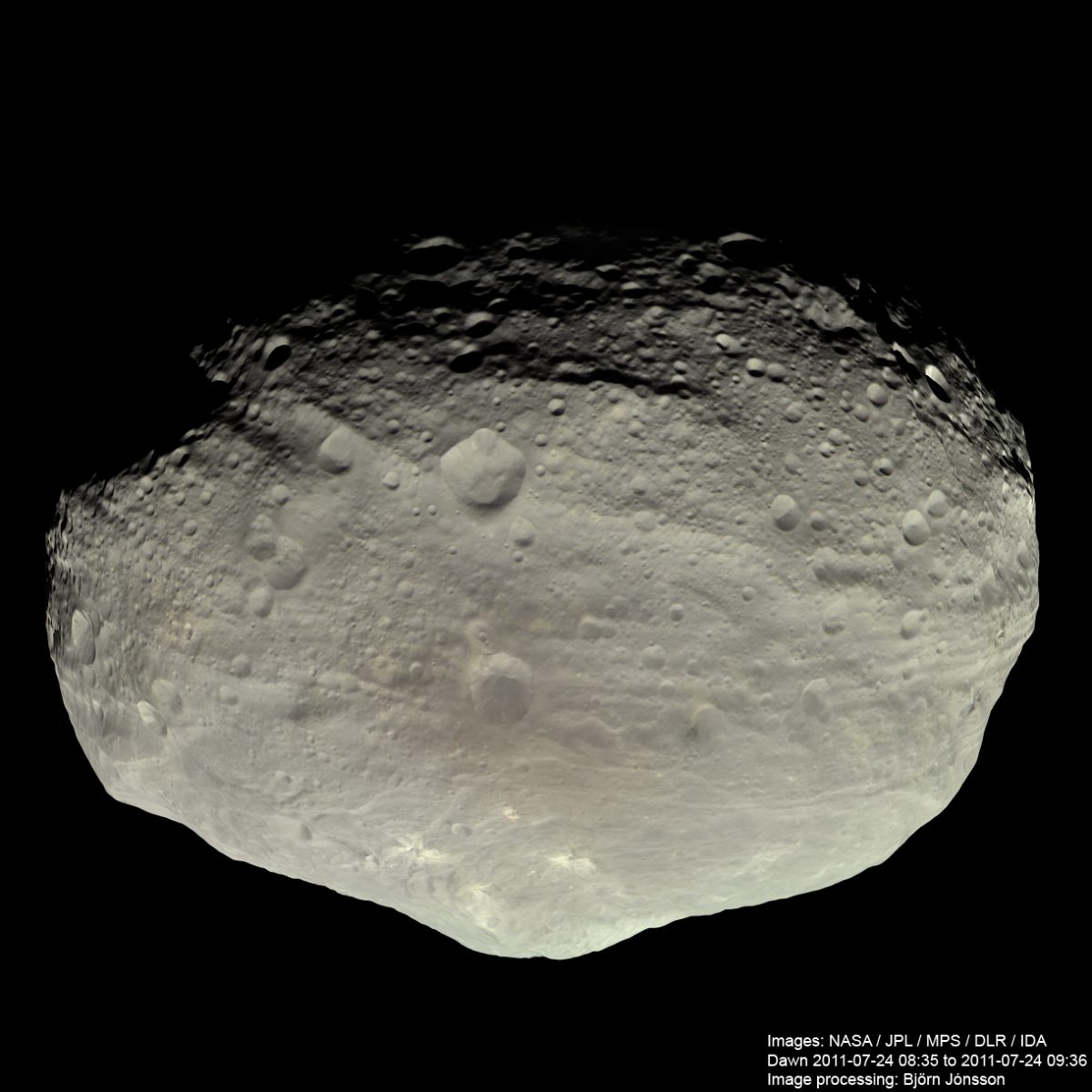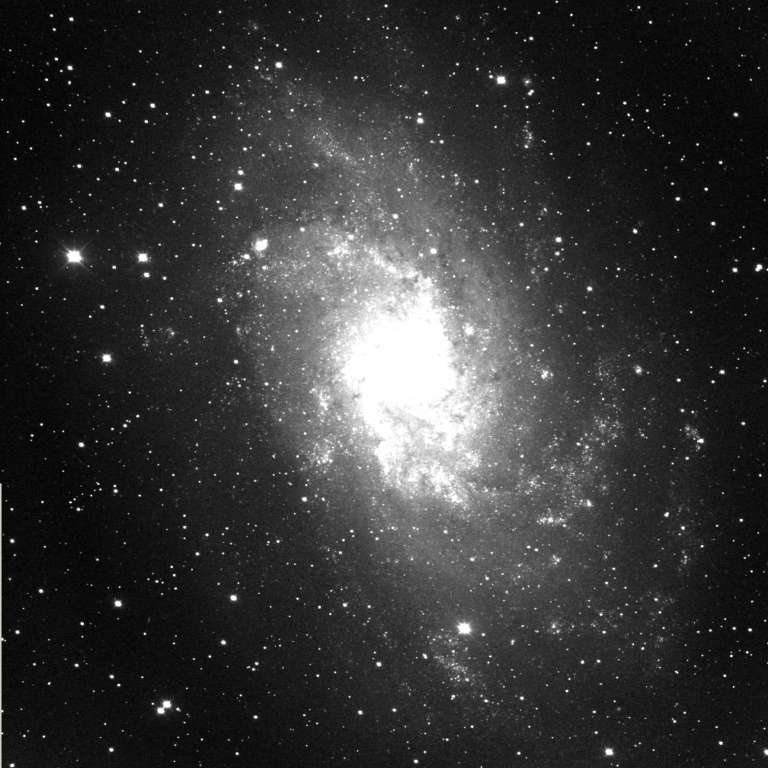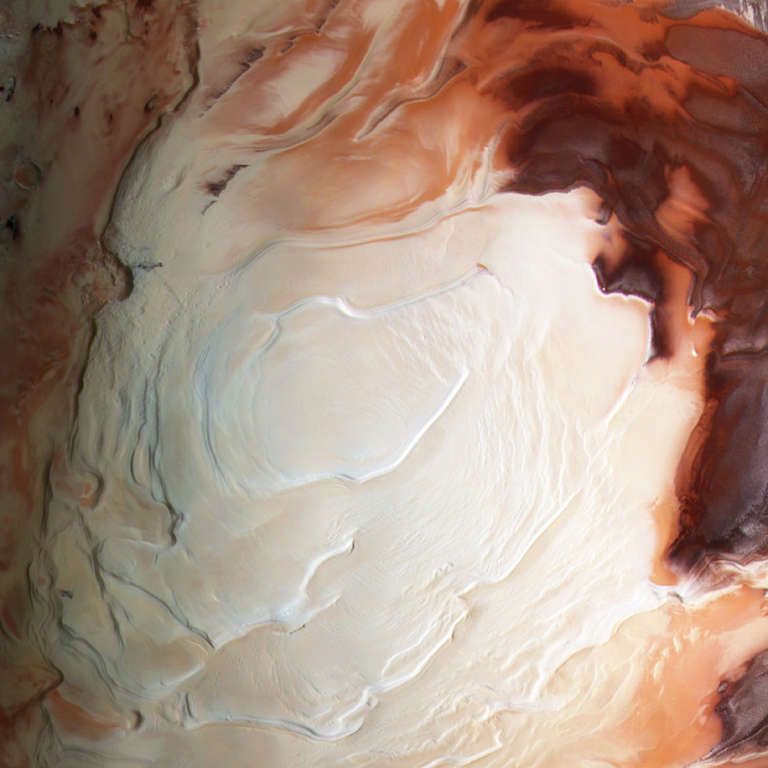All
All
Stories, updates, insights, and original analysis from The Planetary Society.
Producing global views of Vesta from archival data
Björn Jónsson produces beautiful color and 3D global mosaics of Vesta from Dawn's archival data.
Photo gallery: MAVEN being prepped for launch
Watching MAVEN go through its final launch preparations via the photo gallery at the Kennedy Media Archive.
A special Phobos eclipse
Those sneaky scientists on Curiosity managed to catch a Phobos transit of the Sun with one set of cameras, and to watch its shadow darkening the surface with another. COOL!
A Map of the Evening Star
Beautiful maps of a mysterious place.
Caution: Spacecraft Under Construction
Join Emily Lakdawalla and Mat Kaplan inside JPL's High Bay 1, where two Earth-revealing missions are being readied for launch.
Field Report From Mars: Sol 3397 - August 13, 2013
Opportunity arrived at the base of the next segment of the Endeavour crater rim and is now investigating the contact.
Asteroid Telescope First Light
Using a Shoemaker NEO Grant a new telescope is operating in Illinois to do asteroid tracking.
Book review: Europe to the Stars, by Govert Schilling and Lars Lindberg Christensen
The world's great telescopes capture stunning photographs of stars, nebulae, and other sky phenomena. In Europe to the Stars, authors Govert Schilling and Lars Lindberg Christensen share many such photos. But the real stars of this book are the great telescopes of the European Southern Observatory.
Dwarf planet, wassup?
In which the fifth graders of Kipp Heartwood Academy argue the competing sides in the is-Pluto-a-planet debate through the medium of rap.
Movie of Phobos and Deimos from Curiosity: super cool and scientifically useful
Yesterday, the Curiosity mission released the video whose potential I got so excited about a couple of weeks ago: the view, from Curiosity, of Phobos transiting Deimos in the Martian sky. In this post, Mark Lemmon answers a bunch of my questions about why they photograph Phobos and Deimos from rovers.
August Advocacy Update: Where We Stand
Planetary exploration sees strong support from both parties in the current budget process, but we have a long way to go before a budget is passed this year.
Dream Chaser mini-shuttle prepares for free flight tests
Sierra Nevada Corporation's Dream Chaser spacecraft recently completed a series of range and taxi tow tests, which pave the way for free flights that could begin this fall.
Pretty picture: spectacular Saturn and Titan
A lovely view of the ringed planet and its hazy moon seen from nearly behind them just a few days ago.
SMAP Under Construction: Field trip to the Spacecraft Assembly Facility
Yesterday I enjoyed my second-ever opportunity to suit up and enter the clean room of the Spacecraft Assembly Facility at the Jet Propulsion Laboratory. On display were SMAP, an Earth orbiting radar mission, and ISS-RapidScat, which will perform a different radar experiment from the Space Station.
Pretty Picture: A Plethora of Perseids
A pretty picture of the Perseid meteor shower from Mount Lemmon, Ariz.
Comet ISON lives on! (we think...)
For several weeks now, ground-based observers have been blind to Comet ISON as our local star was sitting directly between us and the comet. I am delighted to share two pieces of good news: first, that ISON is still alive and well, and secondly that it has been recovered.
Back to the Future With NIAC Program Exec Jay Falker
This week's Planetary Radio talks with the head of the NASA Innovative Advanced Concepts Program about its mission and 12 newly-funded projects that could change the world.
A Turn of the Kaleidoscope
New images from Mars.
Want to learn how to process space images? Take my Cosmoquest Academy class!
The Planetary Society and Cosmoquest have teamed up to offer a short course in space image processing, and I'll be teaching! The course comprises four one-hour sessions from October 14 to 23.
Interplanetary eyes on the lookout for comet ISON
Space blogger Daniel Fischer provides a preview of the exciting interplanetary observing campaign that has recently begun to study comet C/2012 S1 (ISON) from vantage points across the solar system.


 Explore Worlds
Explore Worlds Find Life
Find Life Defend Earth
Defend Earth


 Sun
Sun Mercury
Mercury Venus
Venus Earth
Earth Mars
Mars Jupiter
Jupiter Saturn
Saturn Uranus
Uranus Neptune
Neptune Small Bodies
Small Bodies
















